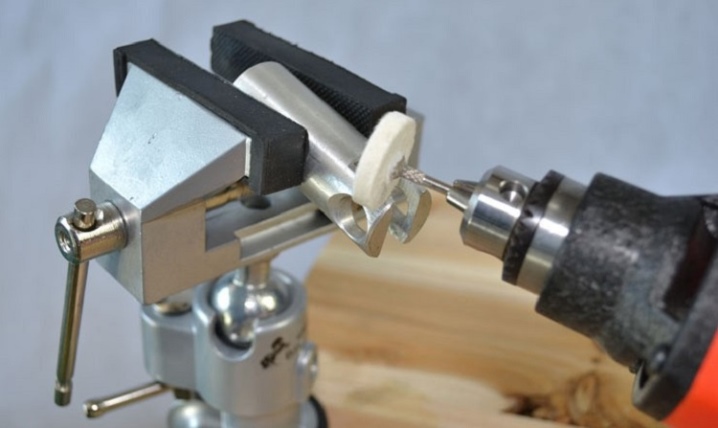All about jewelry vise

Usually, working with precious metals is perceived solely as smelting and forging. However, it also implies a number of other technological operations. Therefore, it is very important to know everything. about jewelry vices and their capabilities.

Peculiarities
First of all, you need to find out what jewelry vise is in general, how they differ from vices used in other industries. In a vise for jewelry, various parts are clamped (fixed) in order to facilitate manipulation with them. Professionals call this tool "shrabkugel". The literal translation is "ball vise".
A heavy ball is placed on the stand. Small vise is placed on this ball. Their lips can be changed as needed. Sometimes, instead of one tool block, a mount for replaceable fixtures is installed. Small vices can also be inserted into it. It is common to find simply reduced copies of the locksmith's tool, but its functionality is in doubt.
Shrabkugel, aka Sharnogel, capable of spinning in an arbitrarily chosen direction. Therefore, the workpiece will be placed in the most convenient way for jewelers. The diameter of the ball at the base is usually 60-120 mm. However, there are also some models with a support ball of 140 mm diameter.
There are both cast and balls assembled from halves, the main structural materials are cast iron and steel.



Model overview
Lovers of Russian products should pay attention to jewelry vise "Bochka". The scope of delivery includes plastic collets. The collet is complemented by a bottom clamp. This model has 96% positive reviews.
Getting to know the ball hand vise, useful to pay attention to MicroBlock... The manufacturer promises the optimal combination of small size and secure fit. The clamping jaw system is itself centered in the most rational way. The manufacturer also promises:
reliable system of internal stoppers;
suitability for setting stones;
low profile, ideal for working under a microscope;
opening up to 50 mm;
total net weight 1.8 kg;
ball diameter 79 mm;
the height of the clamping jaws is 46 mm;
clamping jaw width 22 mm;
a hex wrench and a number of other auxiliary tools included.


The true "classics" of jewelry making turns out to be model T-16. It was made back in the USSR. The vise itself is made of metal, but equipped with a wooden handle. The divorce limit is 10 mm. Other specifications are as follows:
length 130 mm;
width 16 mm;
own weight 0.165 kg.

How to choose?
Of course the choice of jewelry vise is made taking into account the work to be performed... In this case, it is imperative that pay attention to reviews, which give a specific model. Important: these reviews should be taken from different sites in order to eliminate any problems or misunderstandings. It is categorically impossible to take a metalwork curved vice for jewelry and other fine work. Using them is sheer torment.

Quite a few experts believe that it is necessary use the gravity-up model... When creating it, they tried to take into account all the shortcomings of the previously existing options. Such a device is different:
rigidity like a good plumbing tool;
reliable tilt adjustment using wedges;
thoughtful fixation of various movements;
low availability (new copies are no longer made even to order, and the old ones cost 30,000 rubles);
large (about 30 kg) own weight.
The key in any case is the width to which the sponges are bred. It is she who determines which parts can be successfully processed. Important: it should be checked that the vice works smoothly and without jamming. It is useful to have a fuse on the lead screw, otherwise it will fall out easily.
And of course, you need to think about whether working on a particular device will be comfortable enough.


You can watch an overview of jewelry vices from China in the video below.













The comment was sent successfully.